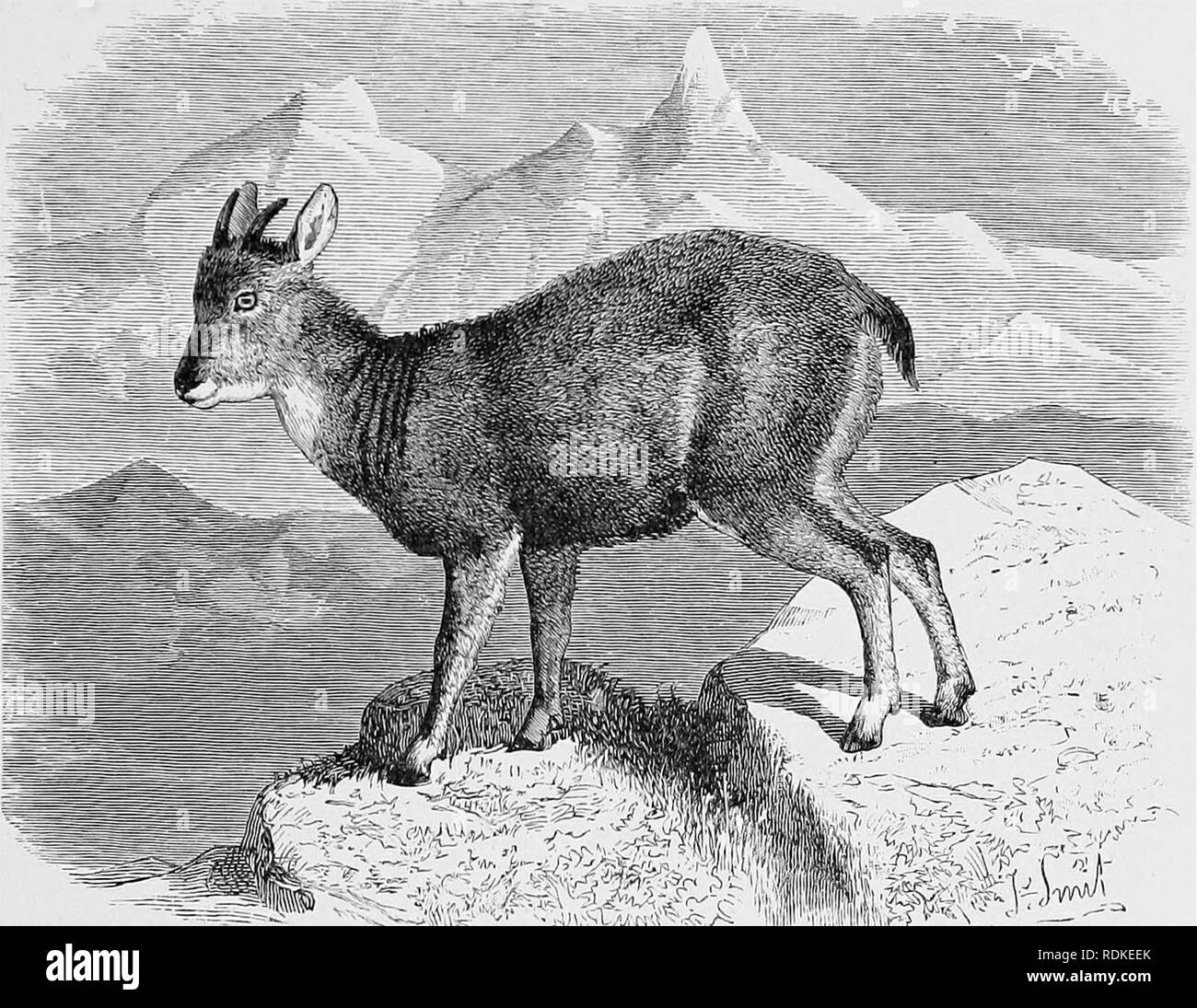. The Cambridge natural history. Zoology. >;i THE MUSK OX 327 which has the pecuharity of having the shortest cannon bones of any Euminant. Its name denotes its range.. Fig. 1/7. —Goral. JSemmihaedus ijoicd. x y-. {¥iom Aatuie.) The Musk Ox, Ovibos moschatus, Iras been thought to be on the borderland between the Sheep and Oxen, as indeed expressed in its scientific name. It is a purely Arctic creature, now con- fined to the ISTearctic region; but it formerly existed in the Arctic regions of Europe. The anatomy of the " soft parts" of this genus has lately been investigated by Dr.

Image details
Contributor:
The Book Worm / Alamy Stock PhotoImage ID:
RDKEEKFile size:
7.1 MB (612.1 KB Compressed download)Releases:
Model - no | Property - noDo I need a release?Dimensions:
1797 x 1390 px | 30.4 x 23.5 cm | 12 x 9.3 inches | 150dpiMore information:
This image is a public domain image, which means either that copyright has expired in the image or the copyright holder has waived their copyright. Alamy charges you a fee for access to the high resolution copy of the image.
This image could have imperfections as it’s either historical or reportage.
. The Cambridge natural history. Zoology. >;i THE MUSK OX 327 which has the pecuharity of having the shortest cannon bones of any Euminant. Its name denotes its range.. Fig. 1/7. —Goral. JSemmihaedus ijoicd. x y-. {¥iom Aatuie.) The Musk Ox, Ovibos moschatus, Iras been thought to be on the borderland between the Sheep and Oxen, as indeed expressed in its scientific name. It is a purely Arctic creature, now con- fined to the ISTearctic region; but it formerly existed in the Arctic regions of Europe. The anatomy of the " soft parts" of this genus has lately been investigated by Dr. Lonnberg.-' The animal has no foot glands such as occur in Ovis. Its kidneys, however, are non- lobate, and it has orbital glands. The cotyledons of the placenta are unusually large, and the cow has the " primary four " teats. It cannot, in fact, be definitely referred to either the Caprine or the Bovine section of the Cavicornia, and while possibly most allied to Budorcas, it may be regarded, at least for the present, as entitled to form a separate sub-family of its own. The muzzle ' ^ Proc. Zool. Soc. 1900, p. 142.. Please note that these images are extracted from scanned page images that may have been digitally enhanced for readability - coloration and appearance of these illustrations may not perfectly resemble the original work.. Harmer, S. F. (Sidney Frederic), Sir, 1862- ed; Shipley, A. E. (Arthur Everett), Sir, 1861-1927. ed. [London, Macmillan and Co. , Limited; New York, The Macmillan Company